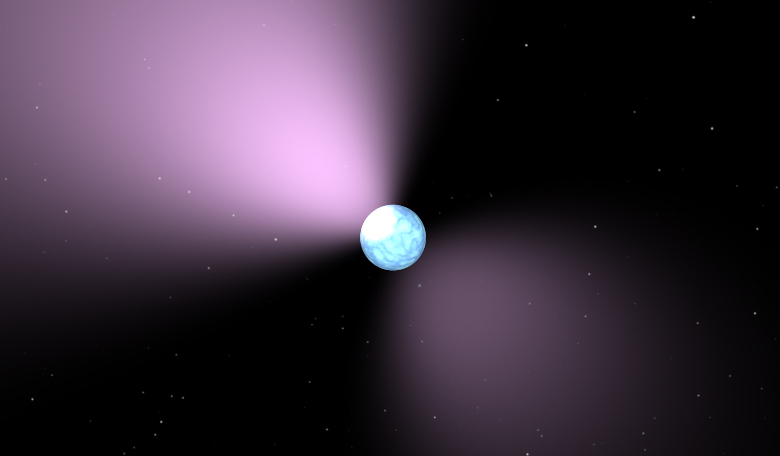A radio pulsar that was first observed over 16 years ago but has recently been seen to act like a magnetar, could be in a never-before-seen transition state between the two, thus giving scientists the chance to see how these objects evolve.
PSR J1119-6127 is a type of neutron star known as a radio pulsar – an extremely dense remnant of an exploded star that emits radio waves in predictable pulses akin to the way a lighthouse sweeps out beams of light. Magnetars on the other hand have violent, high-energy outbursts of gamma rays and X-rays and have some of the strongest known magnetic fields in the Universe. For a long time it was believed that radio pulsars and magnetars were two distinct objects, but in the last decade opinion has changed and evidence has come to light that suggests the two stars could be just different stages in the evolution of a single object.
"This neutron star wears two different hats," said Walid Majid, astrophysicist at NASA's Jet Propulsion Laboratory, Pasadena, California. "Sometimes it's a pulsar. Sometimes it's a magnetar. This object may tell us something about the underlying mechanism of pulsars in general."
So why are X-rays suddenly erupting from a regular radio pulsar? "We think these X-ray bursts happened because the object's enormous magnetic field got twisted as the object was spinning," Majid said.
In a scenario analogous to tectonic plates on Earth, the stress of a twisting magnetic field is so forceful that it causes the outer crust of the neutron star to break, consequently causing an abrupt change in rotation called a "glitch.” Fortunately this glitch was picked up NuSTAR (Nuclear Spectroscopic Telescope Array) and additional observations a couple of weeks later showed that the radio emissions from J1119 had sharp increases and decreases in intensity, thus allowing scientists to quantify how the emission evolved.
"Within 10 days, something completely changed in the pulsar," Majid said. "It had started behaving like a normal radio pulsar again."
However, is J1119 a pulsar and slowly becoming a magnetar, or is it the other way around? Some scientists argue that objects like these start off as magnetars and gradually stop outbursting X-rays and gamma rays over time to become normal pulsars. But not everyone agrees with this hypothesis.
It is possible therefore that J1119 could help shed light on which way these types of star evolve as recent observations have showed a marked brightening of emissions at radio wavelengths, in a pattern consistent with other magnetars.
"Our recent observations show that this object contains a bit of the 'astrophysical DNA' of two different families of neutron stars," said Tom Prince, an astrophysicist at JPL/Caltech in Pasadena. "We are looking forward to finding other examples of this type of transitional object."











